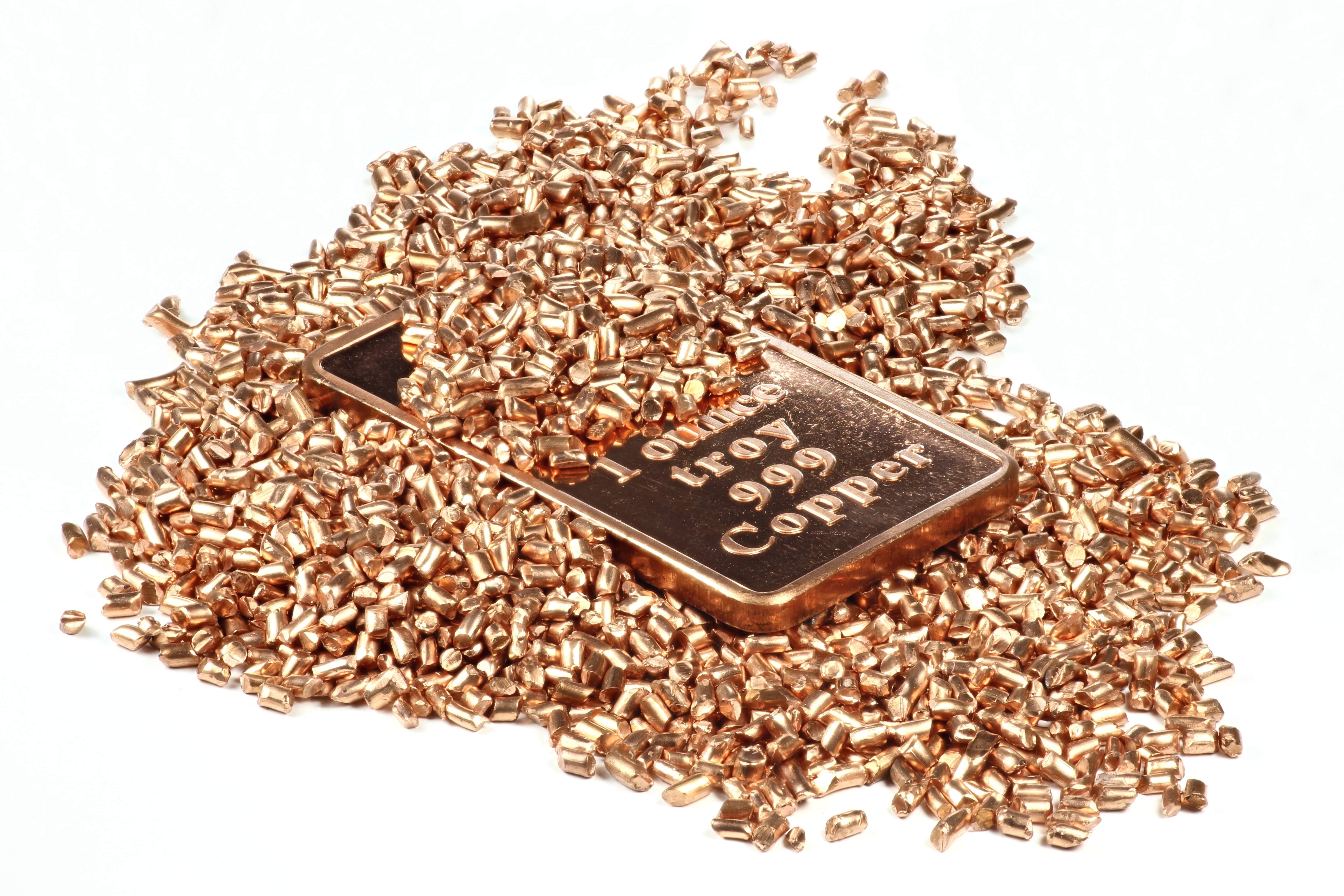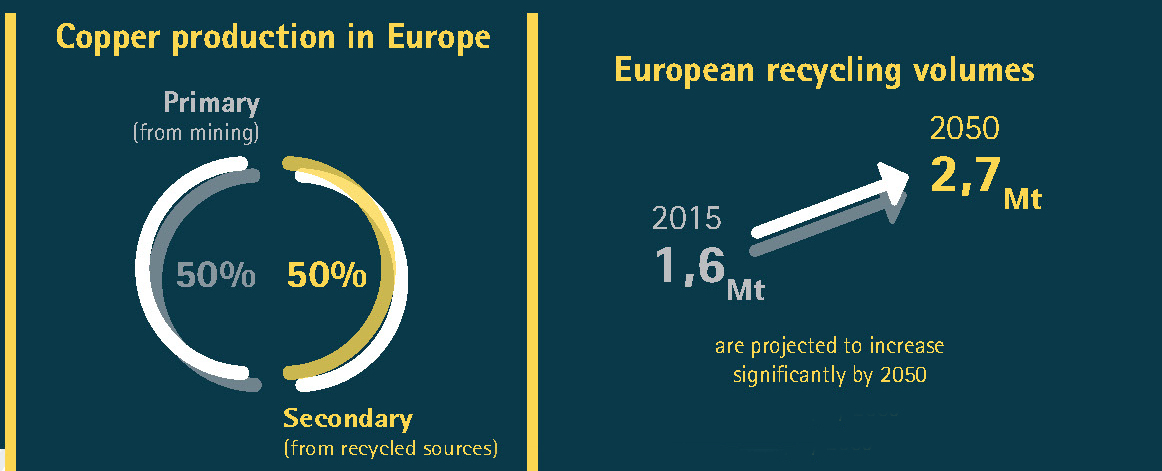
Copper saves resources
Recycling conserves resources, reduces environmental impact and saves energy by eliminating the energy required for mining, processing and smelting. Copper is probably the most recycled material in the world. For generations, the collection and trade of scrap and used materials for copper and copper alloys has been well organised. The reason is the excellent suitability of copper materials for reuse.
What is a "real recycling rate"?
A "true recycling rate" for copper is obtained by basing this on the useful life of the products until reuse and relating the amount of copper reused to the total production at the beginning of the useful life. Copper and copper alloys have a long useful life because of their excellent durability, as the following examples show:
| Product | Useful life |
|---|---|
| Small electric motors | 10 to 12 years |
| Vehicles | 15 to 18 years (vehicle service life) |
| Cables | 30 to 40 years |
| Buildings | 60 to 80 years |
If an average useful life of 35 years is taken as a basis, this results in a “real” recycling rate, related to the total copper production 35 years ago, of almost 80 %. The “real” recycling rate better describes the almost complete recycling of secondary copper than the recycling rate of 50 %. For the recovery of copper in the recycling of end-of-life vehicles, a recycling rate of about 90 % is expected. The development of suitable reprocessing methods for the difficult-to-handle electronic scrap will increase this rate in the future. The recycling rate expresses that about 50 % of the total copper demand can be covered by scrap and return materials. Since Germany has virtually no copper deposits of its own, the return materials represent an important resource for covering copper demand.

Recycling conserves resources
In the meantime, about 50% of the copper used in Europe comes from recycling. In Germany, more than 45 % of the copper produced in this country comes from recycled material. This is a record and makes it clear that the current copper demand is increasingly being met from recycling. This “win-win” situation helps to meet the steadily growing demand for this metal while at the same time reducing the environmental impact associated with copper production. Moreover, increased recycling further secures copper availability for future generations.
Recycling copper is a very effective way to return the valuable material to the production cycle. In fact, copper production from secondary materials only requires a maximum of 20 percent of the energy needed to extract primary copper from ore and concentrates. Globally, this saves 100 million MWh of electrical energy and reduces Co2 emissions by 40 million tonnes annually. In principle, copper can be recycled again and again in its applications without any loss of quality.
Are you looking for a different content?
Sustainability
The life of copper is infinite and has no end phase.
More